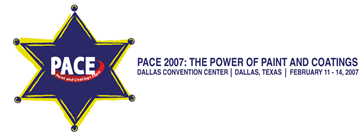Search
Individual Conference Papers
View as
Sort by
Display
per page
Inspection of the polyurea on the San Mateo Bridge
Product Number:
41208-408-SG
Publication Date:
2008
$20.00
Inspection Techniques for Flash Rust Formed After Waterjetting
Product Number:
41210-522-SG
Publication Date:
2010
$20.00
Inspection, Touch Up, & Repair of Hot-Dip Galvanizing
Product Number:
51219-221-SG
Publication Date:
2019
$20.00
Installation of a Primary Containment System in Existing Underground Concrete Storage Tanks
Product Number:
41211-630-SG
Publication Date:
2011
$20.00
Installed UT Sensors for Continuous Corrosion Monitoring: Better Understanding How Process Changes Influence Corrosion Rates
Product Number:
51321-16228-SG
Publication Date:
2021
$20.00
Instant-Off Potentials Underestimate Cathodic Protection Levels on Pipelines
Product Number:
51323-19083-SG
Publication Date:
2023
$20.00
Institutionalizing Corrosion Prevention and Control in the USAF
Product Number:
41216-990-SG
Publication Date:
2016
$20.00
Insulation Driven Intergranular Stress Corrosion Cracking of Carbon Steel
Product Number:
51324-20914-SG
Publication Date:
2024
$40.00
Insulations Ageing & CUI Implications - A Comparison of Lab & Field Samples
Product Number:
51324-21093-SG
Publication Date:
2024
$40.00
Integrated Coating System For Corrosion Protection Of Carbon Steel In Artificial Geothermal Brine
Product Number:
51322-17708-SG
Publication Date:
2022
$20.00
Integrated Corrosion Analysis Software and its Application to dc Corrosion Analysis
Product Number:
51323-18819-SG
Publication Date:
2023
$20.00












